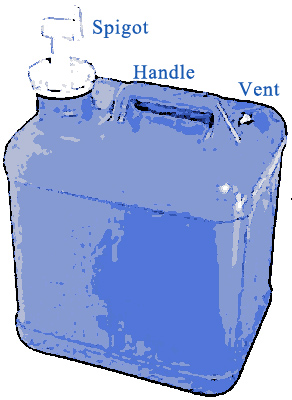BIN-SYS-Concepts
Systems Models
(Systems Models)
Abstract:
The functional composition of individual biomolecules to "systems" faces challenges from incomplete data for "bottom up" approaches, and incomplete knowledge for "top down" approaches. This unit discusses the issues, explains the concept of reverse engineering higher order functions from basic components and demonstrates strategies for architectural modelling of systems.
|
Objectives:
|
Outcomes:
|
Deliverables:
Prerequisites:
You need the following preparation before beginning this unit. If you are not familiar with this material from courses you took previously, you need to prepare yourself from other information sources:
- Metabolism: Enzymatic catalysis and control; reaction sequences and pathways; chemiosmotic coupling; catabolic- and anabolic pathways.
- Cell cycle: Replication control and mechanism; phases of the cell-cycle; checkpoints and apoptosis.
This unit builds on material covered in the following prerequisite units:
Contents
Evaluation
Evaluation: NA
Contents
- A theory can be proved by an experiment; but no path leads from experiment to the birth of a theory.
-
- (Variously attributed to Albert Einstein and Manfred Eigen)
Systems biology is about systems ... but what is a system, anyway? Definitions abound, the recurring theme is that of connected "components" forming a complex "whole". Complexity describes the phenomenon that properties of components can depend on the "context" of a component; the context is the entire system. That fact that it can be meaningful to treat such a set of components in isolation, dissociated from their other environment, tells us that not all components of biology are connected to the same degree. Some have many, strong, constant interactions (often these are what we refer to "systems"), others have few, weak, sporadic interactions and thus can often be dissociated in analysis. Given the fact that complex biological components can be perturbed by any number of generic environmental influences as well as specific modulating interactions, it is non-trivial to observe that we can in many cases isolate some components or sets of components and study them in a meaningful way. A useful mental image is that of clustering in datasets: even if we can clearly define a cluster as a number of elements that are strongly connected to each other, that usually still means some of these elements also have some connections with elements from other clusters. Moreover, our concepts of systems is often hierarchical, discussing biological phenomena in terms of entities or components, subsystems, systems, supersystems ... as well, it often focusses on particular dimensions of connectedness, such as physical contact, in the study of complexes, material transformations, in the study of metabolic systems, or information flow, in the study of signalling systems and their higher-order assemblies in control and development.
At the end of the day, a biological system is a conceptual construct, a model we use to make sense of nature; nature however, ever pragmatical, knows nothing of systems.
In this sense systems biology could be dismissed as an artificial academic exercise, semantics, even molecular mysticism, if you will (and some experimentalists do take this position), IF systems biology were not curiously successful in its predictions. For example, we all know that metabolism is a network, crosslinked at every opportunity; still, the concept of pathways appears to correlate with real, observable properties of metabolite flux in living cells. Nature appears to prefer constructing components that interact locally, complexes, modules and systems, in a way that encapsulates their complex behaviour, rather than leaving them free to interact randomly with any other number of components in a large, disordered bag.
The mental construct of a "system" thus provides a framework for concepts that describe the functional organization of biological components.
Task:
- Read the introductory notes on Concepts of systems modelling
Task:
|
Draw a system architecture diagram[1] to represent the function of either
Prepare your diagram by clearly defining and listing purpose, input, output and interfaces, feedback control and other structural and behavioural elements. Draw a draft on a separate piece of paper first, then prepare a legible sketch of your diagram. Don't overcomplicate your diagram: 10 to 15 elements will be plenty. A Google Doc with a systems architecture template is linked here. You can access it and make a copy for your own use. |
 |
Notes
- ↑ Some of these were the topic of an in-class quiz in 2016, with an alloted time of 15 minutes. Try hard not to take longer.
About ...
Author:
- Boris Steipe <boris.steipe@utoronto.ca>
Created:
- 2017-08-05
Modified:
- 2017-11-08
Version:
- 1.1
Version history:
- 1.1 Expanded
- 1.0 First live version
- 0.1 First stub
![]() This copyrighted material is licensed under a Creative Commons Attribution 4.0 International License. Follow the link to learn more.
This copyrighted material is licensed under a Creative Commons Attribution 4.0 International License. Follow the link to learn more.